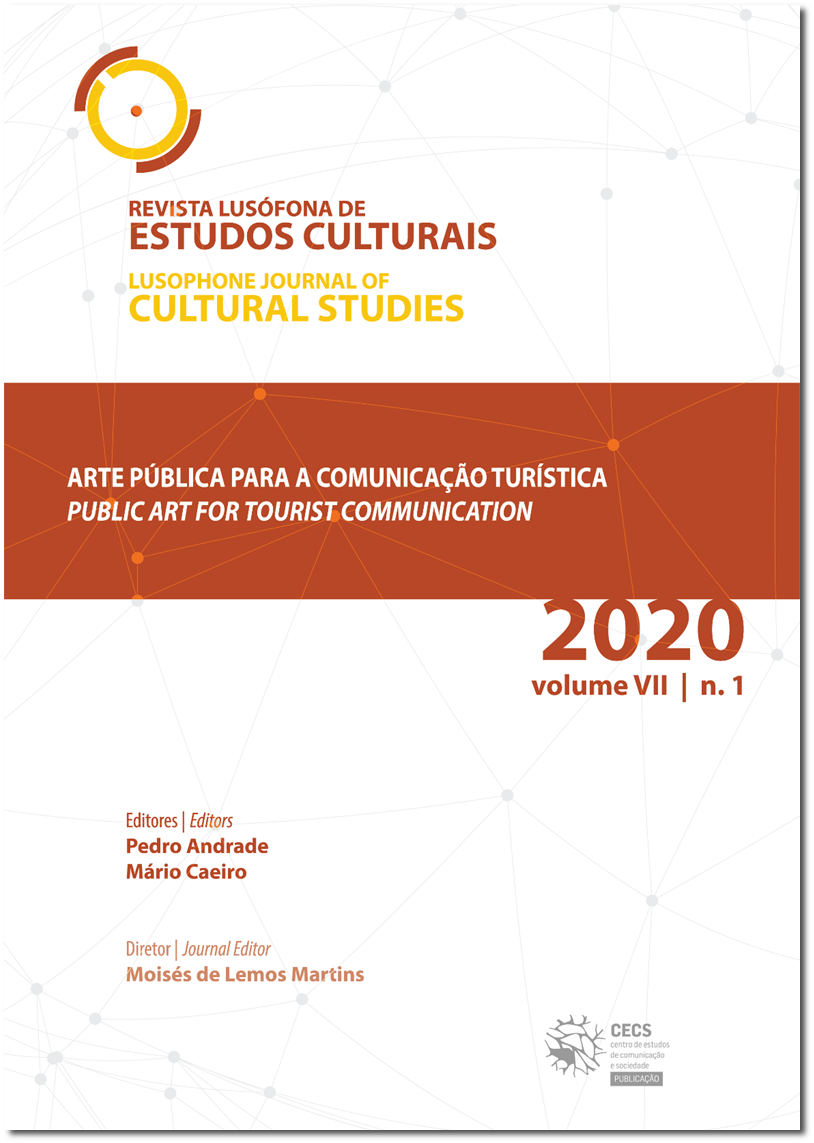Public art between heritage and ideario. The artistic itinerary of Siah Armajani
DOI:
https://doi.org/10.21814/rlec.2215Keywords:
public art, International Institute for Public Art, heritage, Siah Armajani, manifestoAbstract
Siah Armajani (1939-) is an Iranian born sculptor who quite young emigrated to USA, where he began an artistic career in Minneapolis, Minnesota. Beyond being the author of a vast and acknowledged sculptural work, Siah Armajani is also an essayist, having authored “Manifesto public sculpture in the context of american democracy” (Armajani, 1995), which was written for the exhibition “Reading Spaces” he presented, in 1995, at Museu d’Art Contemporani de Barcelona (MACBA). The value of Armajani’s work comes from its engagement to an unequivocal social-utopic-artistic ideario that problematizes the prevalence of the authorship’s statute regime, while rejecting the self-referential character of the artistic work, being both aspects quite unusual in the field of contemporary art production. Aesthetically contemporary, Armajani’s work succeeds to solve one of the bitter dilemmas of modern and contemporary art, as Arnold Schoenberg brightly put into words: “if it is art, it is not for all, and if it is for all, it is not art” (Schoenberg, 1950, p. 124). Curiously, Armajani’s public sculpture ideario is not absolutely unique. In several points, it matches the one of the movement in favour of public art, which by the end of the 19th century had been formed in Belgic, giving birth to the organization of four public art international congresses, two of them having documented Portuguese participation, as we will see in the first section of this paper.Downloads
References
Abreu, J. G. (2010). El concepto de arte público. Sus orígenes y significado actual. In B. G. Vega, M. B. Balbás & J. P. L. Lorente (Eds.), Arte público hoy. Nuevas vías de consideración y interpretación crítica. Actas del congreso internacional de críticos de arte (pp. 17-29). Burgos: AECA/ACYLCA.
Abreu, J. G. (2013). Arte pública. Origens e condição histórica. In Actas do colóquio internacional arte pública e envolvimento comunitário (pp. 17-37). Porto: Universidade Católica Editora.
Abreu, J. G. (2015). A arte pública e as suas especificidades. In M. Á. C. Martin (Ed.), Ciudad y artes visuales (pp. 43-55). Madrid: Grupo de Investigación Arte, Arquitectura y Comunicación en la Ciudad Contemporánea, Universidade Complutense de Madrid.
Abreu, J. G. (2018). A arte pública como meio de interacção social: da participação cívica ao envolvimento comunitário. In B. P. de Almeida, C. Rosendo & M. B. Alves (Eds.), Arte pública. Lugar, contexto, participação (pp. 167-183). Lisboa: IHA-FCSH, Universidade Nova de Lisboa e Câmara Municipal de Santo Tirso.
Abreu, J. G. (2019). Lecture texts. Porto: UCP.
Armajani, S. (1995). Manifesto public sculpture in the context of american democracy. In G. Picazo (Ed.), Espacios de lectura/reading spaces (pp. 111-114). Barcelona: Consorci del Museu d’Art Contemporani de Barcelona.
Broerman, E. (1895). L’art appliqué à la rue et aux objets d’utilité publique. Bruxelas: Alfred Castaigne Éditeur.
Broerman, E. (Ed.) (1907). L’art public. Revue International d’Art Public, 1.
Broerman, E. et. al. (1898). Premier congrès international de l’art public tenu à Bruxelles du 24 au 29 septembre 1898. Bruxelas: Académie Royale des Beaux-Arts.
Broerman, E. et. al. (1905). IIIe congrès international de l’art public tenu à Liège 12-21 Septembre 1905. Bruxelas: Académie Royale des Beaux-Arts.
Broerman, E. et. al. (1910). IVe congrès international de l’art public. Rapports et compte-rendus. Bruxelas: Académie Royale des Beaux-Arts.
Crespo (2007, 26 de abril). Txema G., Siah Armajani exhibe en el artium su denuncia del ataque norteamericano a civiles en Irak. El País. Retirado de https://elpais.com/diario/2007/04/26/paisvasco/1177616414_850215.html
Didi-Huberman, G. (2000). Devant le temps: histoire de l’art et l’anachronisme des images. Paris: Les Éditions di Minuit.
Elliott, D. (1979). Rodchenko and the arts of revolutionary Russia. Oxford: Museum of Modern Art.
Johnstone, M. (2018). The freemasons: the ancient brotherhood revealed. Londres: Arcturus Publishing Limited.
Luesma, T. (2010). Arte público: paisaje, arte y naturaleza. In B. G. Vega, M. B. Balbás & J. P. L. Lorente (Eds.), Arte público hoy. Nuevas vías de consideración y interpretación crítica. Actas del congreso internacional de críticos de arte (pp. 101-110). Burgos: AECA/ACYLCA.
Mechlin, L. (1922). Art life in Washington. Records of the Columbia Historical Society, 24, 164-191.
Museo Nacional Centro de Arte Reina Sofía. (2000). Siah Armajani [Exposição]. Madrid. Retirado de https://www.museoreinasofia.es/en/exhibitions/siah-armajani
Resseler, M. (2013). Brussels 1893. The origins of an aesthetic revolution. Art Nouveau, 5(9/10), 92-95.
Schoenberg, A. (1950). Style and ideas. Selected writings. Nova Iorque: Philosophical Library.
Shaw, E. (1970). Computer print-out makes nine feet column in museum show. Nova Iorque: MoMA.
Smets, M. (1995). Charles Buls. Les principes de l’art urbain. Liège: Mardaga.
Tomkins, C. (1990, 19 de março). Open, available, useful. New Yorker, 52-54.
Downloads
Published
How to Cite
Issue
Section
License
Authors own the copyright, providing the journal with the right of first publication. The work is licensed under a Creative Commons - Atribuição 4.0 Internacional License.












